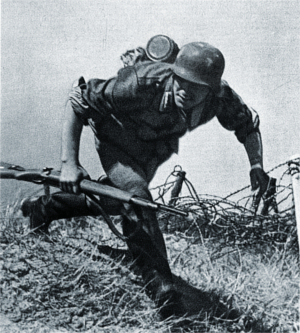(Mirror.)
Peasants were generally reluctant to produce the goods required by the companies, although in the Qobbo Cotton District, technical officers, aided by a strong backing of the local residente (political officer), were able to achieve successful results by securing the cooperation of the chiefs and their subjects.⁴⁵ Otherwise, what the technicians’ reports clearly illustrate is lack of peasant interest in the scheme. Resistance was subtle, local, passive, and constant, similar to peasants’ reactions elsewhere in colonial Africa or in American slave plantations.⁴⁶
An official from the Soddo Cotton District complained that the peasants expressed great enthusiasm for each proposition put forward by the company and signed agreements without having the slightest intention of carrying them out. During their inspections, the field officers discovered that only the worst land was allocated to cotton or, where there was no continuous weekly inspection by the company officials, no care was given to cotton fields. The large number of private fields existing in any one block, the need for a continuous presence in collective fields and the variety of tasks to be performed in any one day by the field inspectors, made any attempt at rigorous inspection almost impossible.⁴⁷
Confronted with such difficulties, the companies shifted their emphasis from reliance on private to collective fields. Administratively, the strategy seemed to offer better control of the production of cotton and labor, but to its opponents, this method was only a tool of “lazy” technicians who wanted to sacrifice productivity to administrative expediency, surrendering to the Ethiopians’ demands. Opponents pointed out that the collective fields had unfailingly proved to be unproductive largely because the Ethiopians reserved the best lands for their own food crops.⁴⁸ Yet in practice, the shift from private to collective fields neither eased the administrative problems nor improved production efficiency, but aggravated existing difficulties.
Collective fields seemed to offer more satisfactory use of labor, which was unpaid and easily recruited. But in practice passive resistance left the companies impotent, dependent on the cooperation of the chiefs. Since not all chiefs were willing to collaborate, the companies had to resort to the use of force. Some chiefs were replaced and others fined. In some places, stringent measures were adopted allocating to each chief a labor quota proportional to the number of people under his jurisdiction.
Yet, even willing chiefs found it difficult to persuade their people to work in collective fields; sometimes the labor force they dispatched was far below the requirements of the company. In the case of the Motoarato Camp in Näqämti, the chiefs were able to supply only 460 workers per day against 1,000 agreed. Once in the fields, this same labor proved recalcitrant and used every pretext to avoid work or to disappear and return home.⁴⁹
[…]
As in collective cotton farms, it was largely the financially underprivileged who ended up in the mines while the well-to-do or influential often gained exemption. Earlier the companies were dismayed when they discovered that most of their recruits happened to be, as one official described it, the old, crippled, and half-blind. A medical test was introduced whereby each laborer underwent a relatively rigorous examination. The work force walked to the work-place, and despite strict security, many were lost many during the journey.⁵³ Those who reached the work-place were subjected to an extremely tough régime of control and, as in Somalia, the measures adopted against the dodgers was so brutal as to be “indistinguishable from slavery.”⁵⁴
[…]
The official explanation for the resistance stressed the conventional stereotype of the naturally idle and thriftless Ethiopian peasant, who had a deep-seated uneconomic attitude and resistance to change.⁵⁷ […] But rather than being lazy and apathetic, the peasants were actually hard-working and calculating. When they were searched out in their villages, they were not sitting idle, feasting or drinking, but attending to growing their own food.⁵⁹ The peasantry was acutely aware of the disadvantages associated with cultivating cotton.
[…]
The most tangible effect of this monopolistic situation was a sudden revival of local “black markets” and an outbreak of cotton theft “whereby the farmer harvested cotton at night and hid it in order to sell it in one of the remote markets.”⁶⁸ […] Theft was widely reported, and those caught were subjected to harsh punishment:
Whenever the theft was discovered, it was reported to the residente, who ordered the immediate arrest of the culprit; but it was not possible to imprison so many thousands of the natives. So the general tendency was to bring to trial those involved in serious theft while subjecting those guilty of petty theft only to corporal punishment.⁷⁰
[…]
The expressed intent of the cotton companies was to raise the welfare level of the Ethiopian peasantry without involving any serious disruption of the existing agricultural structure. But in practice it became increasingly clear that the primary purpose of the scheme was forcibly to extract the rural agricultural and labor surplus in order to meet pressing domestic needs in the [Fascist] homeland. The scheme was largely formulated in the interest of the metropolitan textile industry at the expense of the indigenous population. Thus the government’s commitment to uplift the standard of living for the Ethiopians had much rhetoric but little substance.
(Emphasis added.)

